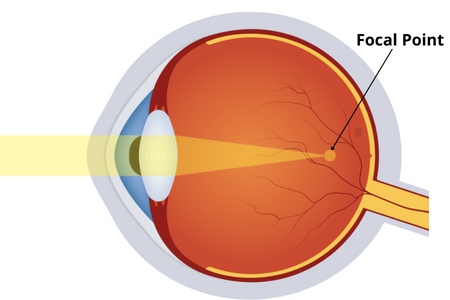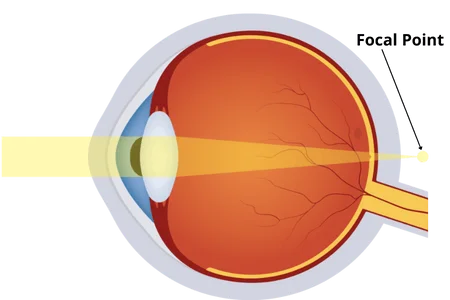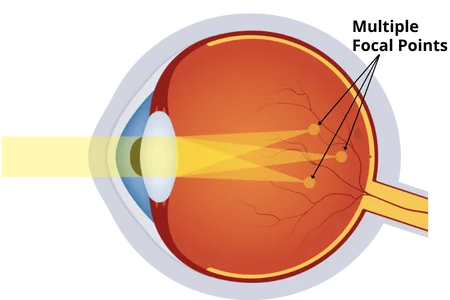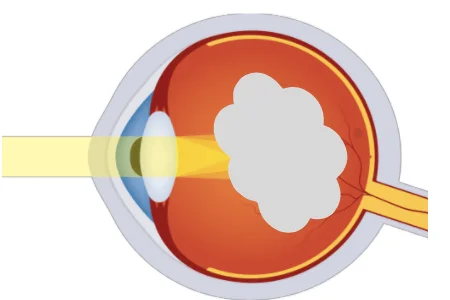Common Vision Problems
Overview of Common Vision Problems
The eye is a complex sensory organ responsible for vision. Light enters through the cornea and passes through the lens to focus on the retina, where images are transmitted to the brain.
Common vision problems include myopia (nearsightedness) where distant objects are blurry, hyperopia (farsightedness) making close-up objects unclear, and astigmatism causing distorted vision. Presbyopia is an age-related difficulty in focusing on close objects. Serious conditions like cataracts (clouding of the lens) and glaucoma (optic nerve damage) can lead to blindness if untreated.
Retinal disorders, including macular degeneration and diabetic retinopathy, affect the retina’s function and also threaten vision. Regular eye exams are crucial for early detection and management of these issues to maintain good eye health.
Book Free Consultation
Book Appointment or Video Consultation online with top eye doctors
Understanding the Prescription.
Understanding a prescription, especially for eyeglasses or contact lenses, involves decoding the information provided by your eye doctor. Here’s a breakdown of the key elements:
- OD and OS: These abbreviations stand for “oculus dexter” (right eye) and “oculus sinister” (left eye). Your prescription will typically have values for both eyes, though they may not be identical.
- Sphere (SPH): This measures the degree of nearsightedness (indicated by a minus sign, like -2.00) or farsightedness (indicated by a plus sign, like +2.00). The higher the number, the stronger the prescription.
- Cylinder (CYL): This indicates the amount of astigmatism (if any) present in your eyes. It may also have a plus or minus sign.
- Axis: This accompanies the cylinder value and denotes the orientation of the astigmatism correction.
- Addition (ADD): This applies to bifocal or progressive lenses and is the added magnifying power for reading or close-up tasks. It is typically a positive number.
- Prism and Base: If you have eye alignment issues, prism correction may be included, specifying the prism power and its base direction.
- Pupillary Distance (PD): This measurement is the distance between your pupils, ensuring the lenses are centered correctly. It may or may not be included in your prescription.
- Cylinder and Axis for Each Eye: If you have astigmatism, you will have CYL and Axis values for each eye.

Common Vision Problems
You may understand the vision problem you’re experiencing and check your dioptre values after any of the following difficulties, then visit a doctor for a consultation.

Myopia
Myopia, commonly known as nearsightedness, is a vision condition where distant objects appear blurry, while close-up objects can be seen clearly. It occurs when the eyeball is too long or the cornea is excessively curved, causing light to focus in front of the retina rather than on it. Myopia is corrected with concave lenses (glasses or contact lenses) to move the focal point back onto the retina, improving distance vision.
Hyperopia
Hyperopia, or farsightedness, is a vision condition where distant objects are clearer than close-up ones. It results from an eyeball that is too short or a cornea with insufficient curvature. Light focuses behind the retina, leading to blurred near vision. Convex lenses (glasses or contact lenses) are used to bend light properly, bringing the focal point onto the retina and improving near and distance vision for individuals with hyperopia.


Astigmatism
Astigmatism is a common vision problem caused by an irregularly shaped cornea or lens. Unlike the smooth, spherical shape, the cornea or lens in astigmatic eyes is more curved in one direction, like a football. This results in distorted and blurry vision at all distances, as light entering the eye cannot focus on a single point on the retina. Correction is typically achieved with cylindrical lenses, either in glasses or contact lenses, to normalize the light’s path onto the retina, improving clarity.
Cataract
A cataract is a clouding of the eye’s natural lens, which is usually clear. This clouding gradually impairs vision, causing symptoms like blurry vision, glare, and reduced color perception. Cataracts are primarily age-related but can also result from injury, disease, or medication. Surgical removal and replacement of the cloudy lens with an artificial one (intraocular lens) is the most common treatment, restoring clear vision.


